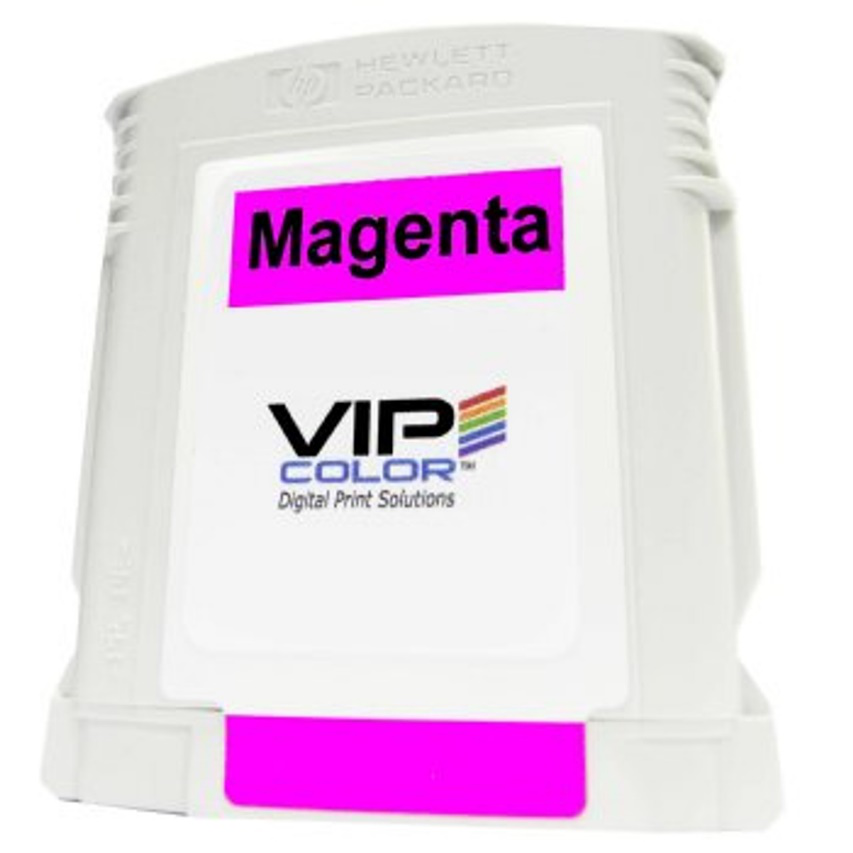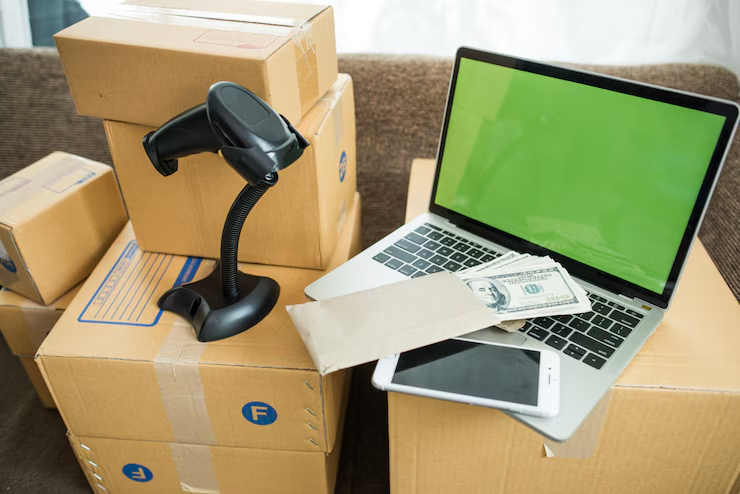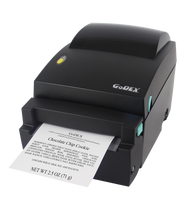How Custom Labels Drive Branding, Sales, and Customer Loyalty
17th Jul 2025
What’s the first thing that catches your eye when you pick up a product from a store shelf?
Chances are, it’s the label. That small rectangle or circular design stuck to the surface of a product carries more weight than it might seem. A single glance can communicate brand identity, pricing, value, instructions, emotion—and even trust.
At DuraFast Label Company, we understand that a label isn’t just a requirement for compliance or branding. It’s an active participant in your marketing strategy. Whether you’re printing on high-quality thermal label printers or creating visually engaging designs with color label printers, your label has a role to play in grabbing attention, shaping perception, and building long-term customer loyalty.
In this article, we’ll cover how custom labels shape brand identity, influence customer decisions, utilize psychological principles, enhance engagement through interactive design, and strengthen private labeling strategies—ultimately impacting your bottom line.
1. Custom Labels as Brand Identity Tools
Every brand tells a story, and labels often serve as the first chapter.
Why Brand Identity Begins at the Label
A product’s label is often the first touchpoint between your business and the consumer. It introduces your visual branding—the color palette, typography, imagery, logo, and layout that set you apart from the competition.
Well-designed custom labels can reinforce:
- Brand consistencyacross product lines
- Memorability, helping customers recognize your products instantly
- Emotional connection, aligning with the values or lifestyle your audience cares about
Think of brands like Coca-Cola or Apple. Their labels and packaging are instantly recognizable. The same principle applies across industries. Whether you sell skincare, coffee, electronics, or supplements, consistent and compelling labels position your products for recall and recognition.
Essential Elements of Brand Identity on a Label
To support branding, custom labels typically include:
- Company logo– Repeated across products to reinforce recognition
- Color schemes– Chosen to reflect emotion and personality
- Typography– Fonts that match the tone of the brand (e.g., playful vs. luxury)
- Taglines or value statements– Communicating the essence of the brand in a few words
By using high-quality color label printers, we ensure that every color, icon, and line of text appears exactly how it was designed—so you maintain control of how your brand is presented on shelves and online.
2. The Role of Label Design in Purchase Decisions
Design is Not Just Aesthetics—It’s Psychology
When customers walk down a retail aisle or browse online, they're not conducting detailed evaluations—they're reacting, often subconsciously, to visual stimuli. Label design taps directly into this psychological space, influencing perceptions in milliseconds.
While many assume design is simply about making something “look good,” in reality, it’s a behavioral tool. A well-executed custom label uses visual hierarchy, color, font choice, layout, and spacing not only to communicate information—but to persuade.
First Impressions Happen in Seconds

It takes only about 7 seconds for a consumer to form a judgment about a product, and often much less when they're exposed to dozens of competing items.
In that time, your custom label must clearly answer these three questions:
- What is this product?(Function)
- Who is it for?(Target audience)
- Why should I care?(Value proposition or emotional hook)
Example:
- Let’s say you’re launching a new line of plant-based protein bars.
- A busy, cluttered design might get lost among traditional candy bars.
- But a clean, minimalist label with green and beige tones, a leaf icon, and the phrase "Organic. Plant-Based. Fuel.”delivers instant clarity and identity.
- Using bold sans-serif fonts with ample white space adds to the impression of health and simplicity.
With a color label printer that accurately replicates your chosen brand palette and a toner-based label printer for smudge-free printing on matte kraft paper, you ensure consistency and professionalism across every bar.
What Makes a Label Stand Out?
1. Shelf Impact
- Bright, unique colors and bold contrast help your product pop against competitors.
- Larger fonts and concise wording make the label readable from a distance.
2. Clarity
- Consumers should understand what the product is within a glance—avoid overwhelming them with too much small text.
- Use bold headers and organize details with typographic hierarchy (e.g., product name, benefits, ingredients).
3. Relevance
- Match the label style to the expectations of your niche.
- A children’s cereal should be playful and colorful.
- A luxury fragrance needs elegant fonts and minimal distractions.
4. Credibility
- Clear layout, aligned text, quality material, and sharp printing signal trust.
- Blurry barcodes, misaligned graphics, or faded colors send red flags.
This is where thermal label printers excel in ensuring barcodes, serial numbers, and critical information are printed with pinpoint accuracy—vital for retail scanning, compliance, and professionalism.
Visual Triggers That Influence Buying Behavior
Labels use visual design to activate psychological heuristics—mental shortcuts that help customers make decisions quickly. Here’s a deeper look at the most powerful visual triggers:
Color
Color psychology is one of the most influential design tools in labeling. Here’s how some common colors are interpreted:
- Red: Excitement, urgency, appetite stimulation (great for snacks or sales labels)
- Blue: Trust, calmness, professionalism (ideal for health, tech, and finance-related products)
- Green: Nature, health, eco-consciousness (frequent in wellness and organic brands)
- Black: Sophistication, luxury, authority (popular in high-end skincare or electronics)
- Yellow: Optimism, energy, visibility (used to attract attention—often seen in promotions)
- Purple: Royalty, mystery, elegance (often used in beauty or spiritual products)
To get these hues right, your color label printer must offer CMYK or expanded gamut printing with high DPI. Precision in color replication is essential for maintaining brand consistency across batches.
Typography
Font choice is a subtle but powerful influencer. Customers associate different fonts with different traits:
- Serif Fonts(e.g., Times New Roman): Traditional, authoritative, formal
- Sans-serif Fonts(e.g., Helvetica, Arial): Modern, clean, approachable
- Script Fonts: Elegant, personal, often used in artisanal or luxury branding
- Display Fonts: Bold and expressive—good for youthful or creative products
Tip: Avoid using too many font styles on one label. Stick to 2 max (one for headlines, one for body text) for a clean, readable design.
Shape and Symmetry
The shape of the label and its visual balance also play a role in perception:
- Rounded corners or circular labelsfeel soft, inviting, and approachable.
- Sharp, angular shapessignal precision, durability, or high performance.
- Symmetry and alignmenthelp customers feel the product is trustworthy and well-constructed.
At DuraFast, we often pair label cutting equipment with specific label roll stock shapes to support brands that want to differentiate through label contours.
White Space
- Also known as “negative space,” this is the unprinted area that surrounds elements on your label.
- White space helps create a sense of luxuryor modernity.
- It also improves readabilityand guides the viewer’s eyes to the most important information.
Overcrowding your label with text or design elements makes it hard for customers to absorb information. In many premium products—think Apple or Aesop—the power of less is more.
Why the Printing Process Matters

Even the best design will fail if your label printing hardware can’t reproduce it correctly.
- Ink cartridges for printers must deliver consistent, saturated color without streaking.
- Toner solutions for label printersoffer fast-drying, high-resolution output—great for variable data and barcodes.
- Thermal label printers are ideal for black-and-white applications like barcoding, date coding, or basic brand presentation.
- Color label printers with pigment or dye-based ink systems are critical for full-color marketing designs, illustrations, and photography-based labels.
The choice of printer, material, and adhesive must match the use case (e.g., waterproof labels for cosmetics, freezer-safe for food, scratch-resistant for outdoor use).
3. Using Design Psychology to Drive Emotional Connections
We don’t just read product labels—we experience them. In a matter of seconds, our brains process colors, shapes, fonts, and textures to make instant emotional judgments. Whether a product feels trustworthy, luxurious, fun, or natural often depends more on its label than its contents.
That’s why custom label design isn't only about communicating facts—it's about creating feelings. And when done right, it builds emotional connections that keep customers coming back.
Let’s break down the key components of label design that trigger those emotional responses and look at how the right printing technology supports each one.
Color Psychology: More Than Just a Pretty Palette
Color is often the first thing people notice—and it can make or break the emotional appeal of your product. Different colors activate different parts of the brain, influencing perception and memory.
Here’s how brands typically use color to shape emotional connection:
● Red
Stimulates excitement, passion, and urgency. Common in energy drinks, sauces, and sale tags.
● Orange & Yellow
Evokes enthusiasm, warmth, and energy. These colors are effective in snacks, juices, and kid-friendly items. Orange also promotes appetite.
● Green
Associated with health, nature, and eco-consciousness. Green is frequently used in organic foods, wellness supplements, and sustainable packaging.
● Blue
Conveys trust, cleanliness, and calm. It’s popular in pharmaceuticals, tech, and bottled water.
● Purple
Signals sophistication, exclusivity, and mystery. Perfect for beauty and high-end personal care brands.
● Black & White
Used to create contrast, drama, and clarity. Black suggests power and luxury; white implies simplicity and cleanliness.
To reproduce these emotional color cues with precision, your print setup must be able to handle high-resolution, full-color output. This is where high-quality color label printers with broad color gamuts and high DPI resolution are vital. Whether you’re printing short runs or scaling up, your ink cartridges for label printers must deliver clean, consistent hues batch after batch.
Font Psychology: The Shape of Emotion

Fonts carry subconscious meaning. Just like color, the typefaces used on a label send signals to consumers about what a brand represents. The psychology of typography is particularly powerful because it influences how we hear the brand’s voice in our heads.
Let’s look at how font styles influence perception:
● Handwritten Fonts
Feel friendly, personal, and authentic. Often used by handmade or small-batch brands to suggest care and craft.
● Bold Sans-Serif Fonts
Communicate strength, simplicity, and confidence. Common in modern consumer electronics and performance supplements.
● Thin Serif Fonts
Suggest elegance, heritage, and tradition. Ideal for luxury cosmetics, wines, and premium food items.
● All Caps Fonts
Signal authority, urgency, or boldness—but can come off as aggressive if not balanced properly.
When designing labels, legibility should always come first. Fonts must be readable even when scaled down or viewed through packaging (e.g., glass bottles). High-resolution printing—whether from color label printers or thermal label printers—ensures that font strokes stay crisp and smooth, avoiding pixelation or bleeding.
Texture and Finish: The Feel of Quality
The physical appearance—and sometimes even the tactile feel—of a label leaves a strong impression on consumers. It can signal whether a product is high-end or utilitarian, handcrafted or mass-produced.
Even when shoppers don’t physically touch the label, the visual representation of texture and finish plays a major role in how they perceive quality.
Types of Label Finishes and Their Emotional Impacts:
|
Finish Type |
Perceived Emotion/Value |
Ideal For |
|
Glossy |
Sleek, modern, vibrant |
Tech gadgets, energy drinks, youth products |
|
Matte |
Sophisticated, premium, minimal |
Skincare, eco-brands, luxury goods |
|
Textured (linen, kraft, etc.) |
Artisanal, natural, authentic |
Organic foods, craft beverages, handmade items |
Let’s say you want your coffee bag label to feel rustic and organic. A kraft paper label with matte finish, printed using pigment-based toner for label printers, will communicate that artisanal feel far more effectively than a standard gloss label.
Or consider a craft beer brand that wants to signal fun and energy—a vibrant, full-color label with a glossy finish and bold typography can make the product feel more engaging and youthful.
To achieve these finishes without sacrificing durability or adhesion, you need both the right thermal label printer or color inkjet printer, and the correct label stock. Some materials bond better with toner, while others are suited to ink-based systems. The compatibility between your printer and label material is what ensures your intended texture and finish appear exactly as designed.
Emotional Triggers Through Design: Real-World Label Examples

Let’s look at how some products intentionally use design psychology on their labels to create lasting emotional impact:
1. Natural Juice Bottles
Use earth tones, green accents, and kraft paper-style labels to suggest health and sustainability. Fonts are usually hand-drawn or rounded sans-serifs for a “fresh-pressed” feel. Labels are printed with durable ink and protected with UV-coating to preserve vibrancy.
2. Luxury Candle Brands
Feature minimalist matte black labels with serif fonts in gold foil. These evoke indulgence and serenity. Thermal transfer printers with foil-compatible stock are often used to produce this elevated look.
3. Children’s Vitamins
Use bright colors, cartoon characters, and soft rounded fonts to appeal to both parents and children. Labels are glossy and scratch-resistant, requiring high-quality color label printers and robust materials for long shelf life.
In each of these examples, emotion is built into the design from the beginning—and the printing process ensures that vision comes to life without compromise.
Why Printing Quality Is Non-Negotiable
All the design psychology in the world can be undone by poor print quality. Faded colors, off-register prints, streaks, or peeling labels immediately signal low quality. Consumers are more likely to question the integrity of a product if the packaging doesn’t inspire trust.
To avoid this, we recommend:
- High-DPI color label printerswith pigment or dye-based ink systems for photo-quality labels.
- Reliable thermal label printersfor monochrome or barcode-heavy applications that require smudge-proof performance.
- Toner-based label printersfor fast, durable, and professional-looking output with sharp text.
Regularly checking and replacing ink cartridges for printers and toners for label printers to maintain consistency and avoid deterioration.
By aligning your design intent with a professional-grade label printing workflow, your packaging not only looks great—it creates emotional resonance that drives brand loyalty.
4. Enhancing Engagement With Interactive Label Features
Today’s customers are looking for more than just static information—they want interaction.
Labels Can Go Beyond Printed Text
Interactive features on labels help bridge the gap between the physical and digital world. Here’s how:
- QR codes: Let customers scan to access product info, instructions, videos, or discounts
- AR-enabled labels: Create immersive experiences where users can view animations or tutorials through an app
- Scratch-off labels: Encourage engagement through promotions or gamified experiences
- Peel-back labels: Offer additional information without overcrowding the main label
All of these require precise printing execution. If your QR code isn’t sharp enough—or the contrast is off—it might not scan correctly. That’s why many businesses rely on high-quality thermal label printers or well-calibrated color printers that can produce dense blacks and clean lines.
Data Collection and Customer Feedback
Custom labels can also act as a gateway for customer feedback. QR codes or NFC chips can link users to surveys or review platforms, letting you gather insights while reinforcing your brand experience.
5. Supporting Private Label Strategies

In a world of increasing product parity, private labeling has become a powerful growth tool.
What Is Private Labeling?
Private labeling is when a company produces goods that are sold under another company’s brand name. Retailers use it to build their own brand without manufacturing products themselves.
Think of grocery store brands, boutique skincare lines, or small-batch coffee sold under different business names but manufactured by the same source. In every case, the custom label makes the product look unique and ownable.
Why Custom Labels Are Central to Private Label Success
For private labeling to work, the label must:
- Distinguish the product from the manufacturer’s generic offering
- Support the branding strategy of the retailer
- Be adaptable for small-batch or large-scale printing
- Include variable data (e.g., SKUs, batch numbers, barcodes) efficiently
We support private labelers by offering flexible printing systems—from thermal label printers for industrial use to compact color label printers for in-house branding efforts.
Benefits of In-House Label Printing for Private Brands
Instead of outsourcing printing every time a new product is launched or a design is updated, many brands invest in in-house solutions using:
- Label counter machines– To track label output and manage inventory
- Ink cartridges for printers– That support consistent branding across batches
- Toners for label printers– That reduce waste and produce high-definition output
This level of control helps private brands move faster, maintain consistency, and keep costs manageable.
6. Long-Term Value: How Custom Labels Build Customer Loyalty
Beyond the sale, labels can bring people back for more.
Label Features That Encourage Repeat Business
- Referral codesprinted on the label
- Membership or subscription offersincluded in packaging
- Social media handles or hashtagsto drive engagement
- Reward program QR codesthat track loyalty points
These features increase post-purchase interaction. And when printed professionally with thermal label printers or high-quality color equipment, they stay legible and appealing.
Building Emotional Attachments
Sometimes, labels become part of the lifestyle. Think of collectible seasonal labels or packaging designed to be reused or displayed.
Brands that innovate with their custom labels—such as releasing limited edition designs or personalization options—often earn repeat business just from the emotional connection people develop with the brand’s aesthetic.

Ready to Put Labels to Work for Your Brand?
How many opportunities have slipped by because the label didn’t connect with the customer?
At DuraFast Label Company, we provide businesses with the tools to take control of their label production and branding. From high-quality color label printers that bring designs to life, to thermal label printers for compliance and industrial use, we offer printing systems and supplies that scale with your business.
You’ll find everything you need—from ink cartridges for printers that match your machine model to label counter machines that help you manage output efficiently. Our toners for label printers deliver sharp, smudge-resistant output across thousands of labels.
With in-house printing solutions from one of the leading providers in the industry, you can create custom labels that not only impress but perform.
Order now from DuraFast Label Company and take the first step toward labeling that builds loyalty, drives sales, and defines your brand—one print at a time.
